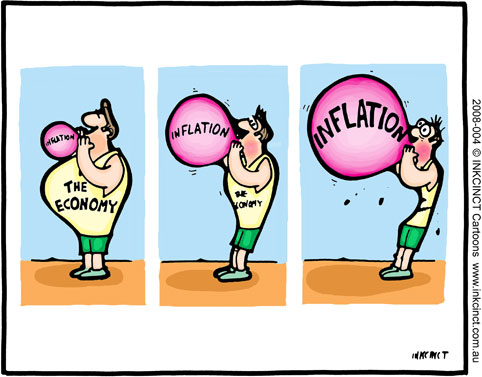Entrepreneurs Don’t Care, Just Like the Honey Badger!
I kept hearing and seeing the slogan “The Honey Badger Don’t Care” in email jokes, on television, and from various people. You may have seen it during the college National Championship Game between Alabama and LSU. You may have seen the signs referring to LSU player #7 Tyrann Mathieu as the Honey Badger.
This all started because of a video called “The Crazy Nastyass Honey Badger” by Randall (strong language; use viewer discretion). Given its popularity, you have likely seen it by now. If not, this video is really funny, but more importantly, it is a very intriguing story from an entrepreneurial perspective.
First of all, the video simply shows footage of a Honey Badger with voice over commentary by Randall that has gone viral (almost 34 million views). This has landed Randal a spot in the cartoon movie as well as a stuffed animal being sold with his voice. He also has a Honey Badger game app and has landed a book deal. The Honey Badger may not care, but Randall did. He cared enough to go out and take advantage of the opportunity he created for himself, turning something fun into what appears to be big money.
As I think about the slogan “the Honey Badger don’t care,” I see a mindset that an entrepreneur sustains when he or she is getting started. The entrepreneur don’t care . . . that he is unfunded, lacks experience in the marketplace, doesn’t have a team in place, doesn’t have any customers, is told he can’t do it, is not smart to quit his job, doesn’t have another source of income, and he still sees an opportunity and goes out there and makes it happen.
Now, you may be thinking that this was just a stroke of luck, and that this guy’s lottery ticket got called up. No, I don’t see it that way just as I don’t see the success of most entrepreneurs as luck. The real story is that Randall’s dad was a camera man for Mutual of Omaha’s Wild Kingdom, and since the age of seven, Randall would narrate the films for the family when his dad would come home from these exotic trips. They would go to the zoo frequently, and he would tell stories of all the animals at the zoo. His big success came from living what he loved to do!
This is the case with most of us! We live in such a way that our passion and love for the things we do puts up in the path of opportunities that have not yet been seen, and then those that decide they really want it “honey badger” away working toward success.
What are you passionate enough about that that you don’t care what gets in your way and won’t let anything stop you?
 to do your thing. What an informative experience!
to do your thing. What an informative experience! 

 As I travel around the world, I listen to people talk and read the local papers to get a feel for how others view the global economy. It is interesting to try and see the world from their perspective. It seems that many people are just looking for their economies to get better and waiting for leaders to do something about it.
As I travel around the world, I listen to people talk and read the local papers to get a feel for how others view the global economy. It is interesting to try and see the world from their perspective. It seems that many people are just looking for their economies to get better and waiting for leaders to do something about it. Our Forum went on a zip line tour called
Our Forum went on a zip line tour called  How the tables turn, wouldn’t you say?! It’s fun to see the little guy with the big idea get brushed off by the big corporation, then go on to dominate or even wipe out that very corporation that blew him off. Repeatedly in my career I’ve seen changes in technology push out the well established businesses that wouldn’t evolve with the new technology. Consider for a moment the evolution of music: from the LP to the 8 Track Tape, then on to the cassette, the CD and now the mp3. Take a look around, it’s everywhere. When was the last time you had to use a pay phone? How many books did you download on
How the tables turn, wouldn’t you say?! It’s fun to see the little guy with the big idea get brushed off by the big corporation, then go on to dominate or even wipe out that very corporation that blew him off. Repeatedly in my career I’ve seen changes in technology push out the well established businesses that wouldn’t evolve with the new technology. Consider for a moment the evolution of music: from the LP to the 8 Track Tape, then on to the cassette, the CD and now the mp3. Take a look around, it’s everywhere. When was the last time you had to use a pay phone? How many books did you download on  Marc has a successful background in entrepreneurial start-ups, with his current portfolio of online businesses generating over 75 million a year. When he got on stage, he talked about making money online and the vast opportunities available. One story that he told literally made my jaw drop.
Marc has a successful background in entrepreneurial start-ups, with his current portfolio of online businesses generating over 75 million a year. When he got on stage, he talked about making money online and the vast opportunities available. One story that he told literally made my jaw drop.